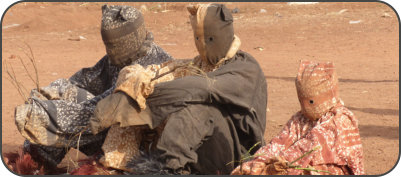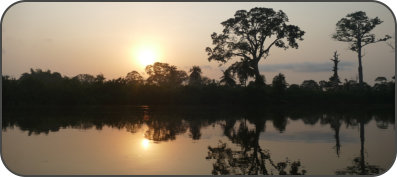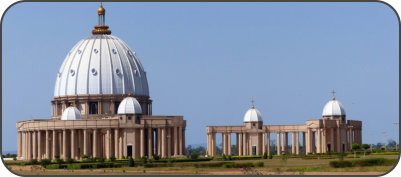

Côte d’Ivoire: In the Land of Cocoa
Our 12-day tour to Ivory Coast offers a unique opportunity to discover the country's historical, cultural, and scenic diversity. In the south,
huge oil palm, rubber and cocoa plantations predominate the vegetation, while in the north drier savannah determines the landscape. The
coastal towns influenced by French colonial history, such as Grand Bassam, form an interesting contrast to the contemplative capital
Yamoussoukro, which is overthroned by the Basilica of Notre Dame de la Paix, a replica of St. Peter's Basilica. Experience mask and
initiation dances of the Baoulé, Senoufo and Dan people, walk over mystical vine bridges, discover the secret of the fetish houses, and
visit untouched fishing villages.
Once you have travelled to Ivory Coast, you will always want to come back.
Day 1: Arrival at Abidjan - Grand Bassam
Meet and greet with your local tour guide and transfer to the hotel at
Grand Bassam (30 km).
(-/-), overnight at Grand Bassam, Hotel Etoile du Sud or similar
Day 2: Grand Bassam - Yamoussoukro
Grand Bassam, some 30 km east of Abidjan, was the first Ivorian capital
under French rule. Since 2012, it has been enlisted as World Heritage
site as a typical colonial town with separate quarters for commerce,
administration, housing for Europeans and housing for Africans. Your
guide will show you the colonial-era buildings, most of them in different
stages of decay, as well as the Governor’s Palace, now housing the
National Costume Museum. A quite interesting collection of traditional
clothing, models of Ivorian architecture, fascinating old photographs and
a quality selection of masks will provide you a good overview of the rich
culture in the region you will visit. Around noon you leave Grand Bassam
and the coastal area and drive on the only "real" highway of West Africa
to Yamoussoukro. (approx. 280 km)
(B/D), overnight at Yamoussoukro, Hotel Le Rocher or similar
Day 3: Yamoussoukro - Bouaké
This morning we‘ll explore Yamoussoukro, the administrative capital of
Côte d’Ivoire. Being the birthplace of former president Félix Houphouët-
Boigny, this small agricultural town became the country’s capital in 1983
and was rebuilt according to a master plan to glorify the president and
his family and ancestors. Today, Yamoussoukro boasts a population of
more than 250,000 and high-profile vanity projects like the stunning
Basilique de Notre Dame de la Paix (bearing a deliberate resemblance
to St. Peter’s Basilica), six-lane highways bordered by more than 10,000
street lights or the seat of the Félix Houphouët-Boigny Foundation. On
our city tour, we soak up the special atmosphere of these places - the
basilica, the conference halls and the stunning views over the
surrounding urban landscape.
This afternoon we‘ll continue on to Bouaké, the Ivory Coast's second
largest city. and visit the village of Kondeyaokro, where you will
experience an unforgettable Goli mask dance by the Baoulé. These
traditional dances are believed to protect against mischief and to
connect people with supernatural powers and gods. (approx. 100 km)
(B/D), overnight at Bouaké, Hotel Résidence Eléphant or similar
Day 4: Bouaké – Korhogo
After breakfast this morning we depart from Bouaké to make our way to
Korhogo, historic stronghold of the Senoufo people. Skilled farmers living
in tight-knit communities, the Senoufo hold on to their pre-Islamic
animistic beliefs, and their artisans are well known for their fascinating
craftwork. In the vicinity of the city, we watch woodcarvers, beadmakers,
potters and weavers at work. Attend a traditional „panther“ dance, the
Boloï, in the evening, another splendid experience of local cultural
heritage. Several young men in panther costumes entertain the crowd
with incredible acrobatics to the sound of the tam-tam. (approx. 320 km)
(B/D), Overnight at Korhogo, Hotel Complexe Olympe or similar
Day 5: Korhogo - Odiénné
After breakfast, continue your journey via Boundiali, the country's cotton
center, heading west to Odienné. This area is inhabited by animists and
Muslims alike. En route, visit fetish houses in Niofouin and get an insight
into the mystical world of animist Senoufo. You‘ll reach Odienné in the
early afternoon. The picturesque town lies in the middle of a valley
surrounded by orchards at the foot of the mountain Dien Quélé (800 m).
Later today we‘ll drive to the small village of Samatiguila. Here you‘ll visit
a beautiful 17th-century-built clay mosque in Sudanese-Sahel
architecture style. (approx. 320 km).
(B/D), Overnight in Odiénné, Hotel des Frontiéres or similar
Day 6: Odiénné - Man
Via Touba we embark on a road trip to Man, called “city of 18
mountains”, a reference to its scenic location at the base of lush green
hills on the eastern edge of the Guinea highland. The whole region is
rich in traditions, crafts and natural attractions. En route, passing the
mountainous area inhabited by the Malinké and Dan people, where few
Dan villages still practice the tradition of ritual stilt dances, we are lucky
to witness another authentic and spectacular dance performance in
which the whole community takes part: White dressed women sing and
dance by the beat of the drums while young men perform acrobatic
dances that evoke unforgettable emotions. (approx. 270 km).
(B/D), Overnight at Man, Hotel Les Cascades or similar
Day 7: Man: Excursion to Lieupleu
In the morning, visit the Cascade waterfall on the outskirts of Man and a
sacred forest populated by a troup of Campbell’s monkeys. According to
local tradition, a beautiful royal princess was once sacrificed to attract
spirits of glamour and vigour to the empire. After her death, the princess
turned into a monkey. Ever since, monkeys have been revered locally.
After lunch, we make an extended excursion to one of the country’s
largest and last remaining vine bridges near the village of Lieupleu,
where you will be challenged to check the bearing capacity of liana
vines, suspended over the Cavally River. There is a stretch of cocoa
and coffee plantations on the other side. The vine bridge may only be
walked on barefoot
and it is said that
the forest spirits
had a hand in its
construction and
that no one was
allowed to watch it
being built.
(approx. ca. 260
km).
(B/D), Overnight at
Man, Hotel Les
Cascades or
similar
Day 8: Man - San Pedro
This morning you‘ll begin the long drive south. Along the way there will
be some stops to stretch our legs and to learn about cocoa processing.
In the evening you‘ll arrive at San Pedro, the second largest port city of
the country. You‘ll stay at a nice beach resort. (approx. 410 km)
(B/D), overnight at San Pedro, Hotel Les Jardins d‘Ivoire or Enotel or
similar
Day 9: San Pedro - Sassandra
We depart San Pedro on the journey to Sassandra. Founded by the
Portuguese on a river estuary, Sassandra was an important outlet of
timber until the construction of the modern port at San Pedro. Today
Sassandra is a bustling fishing village, with scores of rainbow-coloured
boats lined up on the beach. We'll arrive in Sassandra in the late
morning, and after a chance to get lunch we will begin our tour of this
colourful small town. Later in the day, we visit a plant for the production
of red palm oil. before we embark on a 2-hour hippo-tracking boat trip
on the pristine Sassandra River, flanked by thick gallery forest. (approx.
80 km).
(B/D), overnight at Sassandra, Hotel Le Pollet or similar
Day 10: Sassandra - Grand Lahou: Azagny NP
This morning we will drive to Grand Lahou. After lunch, take on a
beautiful boat ride to the mouth of River Bandama, the country’s largest
watercourse. Visit the fishing village of Ancien Lahou and the Assagny
National Park, whose western entrance is only accessible by waterway.
Accompanied by a park ranger, we will set off for a one-hour walk
through the forest and savanna reserve, home to a small population of
forest elephants and a large variety of birds. (approx.150 km)
(B/D), overnight at Grand Lahou, Hotel Le Ravin or similar
Day 11: Grand Lahou - Grand Bassam
Departing after breakfast, we continue the journey east driving to Grand
Bassam. En route, we‘ll visit Tiégba, a lagoon village built on stilts and
accessible only by pirogue. The village’s 6,000 people are followers of
six religions who live in peaceful co-existence. Later today, we'll arrive
in the economic capital Abidjan, for a long time the most modern and
cosmopolitan city of the whole region. Passing the famous skyline of Le
Plateau, Abidjan’s financial district, and after a short visit to the modern,
elephant-shaped St. Paul’s Cathedral, we cross the Ebrié lagoon into
the popular districts and southern outskirts of town. We expect to arrive
in Grand Bassam in the early evening.
(B/D), overnight at Grand Bassam, Hotel Etoile du Sud or similar
Day 12: Grand Bassam - end of tour
During the last breakfast on your trip, you can plan your time until
departure. A visit to the beach, for example, is recommended. In Grand
Bassam, you will have a day room available until your departure to the
airport, which allows you to leave your luggage at the hotel to do your
own exploration of the city. In the late afternoon, you‘ll be taken to
Abidjan International Airport where our trip ends. (approx. 30 km).
(B), Day-use rooms at Grand Bassam
Please note that from time to time our itineraries may be amended.


Highlights of this tour:
 Printer-friendly version
Printer-friendly version
Vero Tours




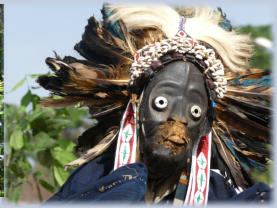


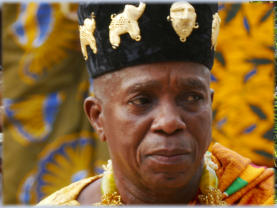
•
Grand Bassam: Colonial charm and beach
•
Yamoussoukro: Impressive basilica
•
Spectacular mask dances
•
Odienné: Fetish houses and mud mosques
•
Man: Vine bridges and sacred monkeys
•
Sassandra: Hippo viewing
•
Grand Lahou: Azagny NP and stilt village
•
Colourful fishing villages in the south
•
Korhogo: Handicraft and mud architecture
•
Abidjan: Modern city skyline


